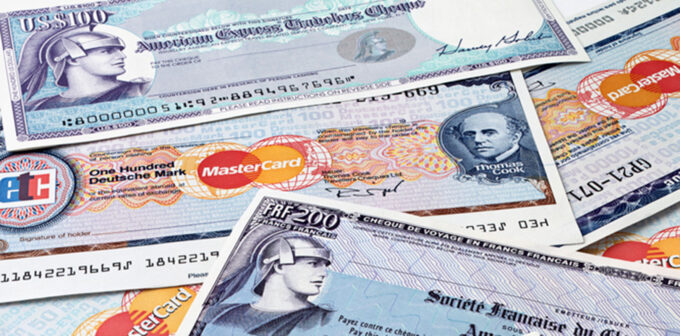Without interoperability, portable medical information still means carrying around pieces of paper.
The patient was angry, and who could blame her?
“I don’t want my records held at the GP,” she said. “That doesn’t help me. I have to access health services wherever I can, and I want every doctor or hospital that treats me to have instant access to my records. Why weren’t they on MyHR?”
The answer was that the various treating clinicians had been unable or had flatly refused to upload this woman’s records to her My Health Record, which we had promised her would happen.
The patient lives hundreds of miles from anywhere in the Northern Territory. Sometimes she and her family members can manage the overnight trip (at great expense) to the closest GP, but other times they have no option other than to access an online telehealth service with no Medicare rebates, or call the flying doctor. So, when the results of her recent consultations and MRI – arranged through a “telehealth for the bush” initiative – were not available when she arrived at the hospital, she was understandably furious.
If you have been around long enough, you will recall traveller’s cheques. Obtaining traveller’s cheques was a painful, arduous, manual process that involved visiting an American Express office and exchanging our cash for wads of special paper that looked like fake cheques (does anyone even remember cheques?!). While overseas, we kept our traveller’s cheques safe, strapped to our abdomens in specially designed pouches, even when we slept, as to cash them required only a convincing signature. This was how we accessed our money while travelling. It was a words-on-paper system that preceded the now ubiquitous little plastic card.
Progress in the banking sector changed the world and is illustrative of the journey global health systems must follow. Because in the same way that we want secure access to our money anywhere we go, patients also want, and are demanding, that their health records follow them wherever they go. Not just locally, but globally.
When plastic cards were first introduced, you could only get your money from an ATM controlled by your bank. So it didn’t alleviate the traveller’s cheque problem because there were no Australian ATMs overseas.
I remember clearly when my bank teamed up with one other bank and suddenly, I had more ATMs to choose from in Australia. But the big four banks didn’t play nice for a long time, continuing their cartel behaviour until the world left them behind and they had no choice but to adopt standardised international information models and secure messaging protocols, which enabled consistent atoms of data to be shared seamlessly anywhere in the world.
It was transformational. Being able to insert an Australian bank card into an ATM of an unknown bank, in a far-flung corner of another country, and see local currency emerge was incredible.
Jump forward another decade and even plastic cards are now on the way out, with most of us tapping our phones to pay for things anywhere in the world.
Health systems have a long road ahead to achieving anything close to this, but there is exciting progress being made in many countries, just not so much in ours. In the UAE for example, the pace of digital health transformation is rapid, supported by a dynamic regulator who remains one step ahead of the market.
The UAE regulator was on the front foot in solving legitimate health data security concerns, and has enacted robust laws, governance arrangements and established a clear process for relevant product vendors. So, problem solved, they can now move on to the critically important interoperability piece.
Full interoperability requires adoption of the international standard health information model, openEHR, which is well advanced across Europe and the UK. Without openEHR, patients will only be able to access their health records from certain health facilities, like when we could only get our money from certain ATMs. So, not what patients want. When openEHR is coupled with the international messaging standard, HL7 FHIR, health data becomes truly interoperable, enabling patients to access their records from anywhere.
Returning now to the angry patient. Her desire to have her records available on MyHR was perfectly understandable. And while MyHR is unlikely to be the long-term solution to Australia’s health data interoperability challenges, the patient should nonetheless have been able to benefit from MyHR, given it’s the best we have right now.
But the primary care provider involved in her case used a PMS that did not connect to MyHR, so she didn’t know how to get the records there, but would have if she could have. The specialist to whom she referred the patient operates a completely paper-based practice, so no hope of him putting anything on MyHR. He’s heard of it but has never used it. And the diagnostic imaging provider flatly refused to upload the patient’s images to MyHR, even though they could have. I mean, why would they, when the omission increases their chances of a second service being provided by their company?
To get Australia’s health system out of the traveller’s cheque phase of its evolution we need strong, courageous leadership, and a whole-of-system approach to evidence based reform, adopting rapid digitisation and international standards.
And we need to start by defining what we mean by “whole of system”, because currently it means different things to different people. I suggest that anywhere a consumer accesses health services would be a good place to start. This would include, but not be limited to, primary care, specialist care, hospitals, pharmacies, allied health, community health, ambulances, aged care, and the NDIS. Let me know if I’ve missed any.
Dr Margaret Faux is a health system administrator, lawyer and registered nurse with a PhD in Medicare compliance, and is the CEO of AIMAC, which offers courses and explainers on legally correct Medicare billing.


